Anorexia nervosa is an illness of starvation, brought on by severe disturbance of body image and a morbid fear of obesity. People with anorexia nervosa attempt to maintain a weight that’s far below normal for their age and height. To prevent weight gain or to continue losing weight, people with anorexia nervosa may starve themselves or exercise excessively.
Bulimia nervosa is an eating disorder (binge-purge syndrome) characterized by extreme overeating followed by self-induced vomiting, trying to get rid of the extra calories in an unhealthy way. It may include abuse of laxatives and diuretics.
Although these disorders primarily affect women, approximately 5%–10% of those afflicted are men, and both disorders can be present in the same individual.
Nursing Care Plans and Management
Nursing care planning for patients with eating disorders: anorexia nervosa and bulimia nervosa include establishing adequate nutritional intake, correcting fluid and electrolyte imbalance, assisting the patient to develop realistic body images, and improving self-esteem. .
Nursing Problem Priorities
The following are the nursing priorities for patients with eating disorders:
- Provide nutritional support and guidance to restore healthy eating patterns.
- Offer individual therapy to address underlying psychological factors contributing to the eating disorder.
- Implement cognitive-behavioral therapy (CBT) or other evidence-based therapies to modify unhealthy thoughts and behaviors.
- Monitor and manage co-occurring mental health conditions, such as depression or anxiety.
- Involve family members or support systems in the treatment process, if appropriate.
- Educate patients and caregivers about the dangers and consequences of disordered eating behaviors.
Nursing Assessment
Assess for the following subjective and objective data:
- Drastic changes in weight, either significant weight loss or rapid weight gain
- Preoccupation with body shape, size, and weight
- Distorted body image and excessive concern about appearance
- Restrictive eating patterns, such as avoiding certain food groups or severely limiting caloric intake
- Binge eating episodes, characterized by consuming large amounts of food in a short period, often accompanied by feelings of loss of control
- Compulsive exercising or engaging in excessive physical activity to compensate for food intake
- Obsessive rituals around food, such as cutting food into tiny pieces or rearranging it on the plate
- Avoidance of social situations involving food
- Changes in mood, including irritability, anxiety, or depression
- Physical symptoms like fatigue, dizziness, weakness, or frequent fluctuations in energy levels
Nursing Diagnosis
Following a thorough assessment, a nursing diagnosis is formulated to specifically address the challenges associated with eating disorders based on the nurse’s clinical judgement and understanding of the patient’s unique health condition. While nursing diagnoses serve as a framework for organizing care, their usefulness may vary in different clinical situations. In real-life clinical settings, it is important to note that the use of specific nursing diagnostic labels may not be as prominent or commonly utilized as other components of the care plan. It is ultimately the nurse’s clinical expertise and judgment that shape the care plan to meet the unique needs of each patient, prioritizing their health concerns and priorities.
Nursing Goals
Goals and expected outcomes may include:
- The client will verbalize understanding of nutritional needs.
- The client will establish a dietary pattern with caloric intake adequate to regain/maintain an appropriate weight.
- The client will demonstrate weight gain toward the individually expected range.
- The client will maintain/demonstrate improved fluid balance, as evidenced by adequate urine output, stable vital signs, moist mucous membranes, and good skin turgor.
- The client will verbalize understanding of causative factors and behaviors necessary to correct the fluid deficit.
- The client will verbalize understanding of causative factors and awareness of impairment.
- The client will display an improved ability to make decisions, and problem-solve.
- The client will establish a more realistic body image.
- The client will acknowledge self as an individual.
- The client will accept responsibility for own actions.
- The client will demonstrate individual involvement in the problem-solving process directed at encouraging the patient toward independence.
- The client will express feelings freely and appropriately.
- The client will demonstrate more autonomous coping behaviors with individual family boundaries more clearly defined.
- The client will recognize and resolve conflict appropriately with the individuals involved.
- The client will verbalize understanding of causative factors and the absence of itching.
- The client will identify and demonstrate behaviors to maintain soft, supple, intact skin.
- The client will verbalize awareness of and plan for lifestyle changes to maintain a normal weight.
- The client will identify the relationship between signs/symptoms (weight loss, tooth decay) to behaviors of not eating/binging-purging.
- The client will assume responsibility for own learning.
- The client will seek outsources/resources to assist with making identified changes.
Nursing Interventions and Actions
Therapeutic interventions and nursing actions for patients with eating disorders may include:
1. Promoting Adequate Nutrition
Patients with anorexia and bulimia nervosa may use laxatives to control their weight, leading to inadequate nutrient absorption and less than body requirements. Inadequate food intake in anorexia nervosa can also result in nutrient deficiencies and imbalanced nutrition. Both conditions can have significant physical and emotional consequences that require professional treatment.
For Bulimia Nervosa
Identify the patient’s elimination patterns.
Understanding the patient’s elimination patterns can help in developing strategies to prevent self-induced vomiting. This involves closely monitoring and recording their bowel movements and any associated behaviors. It is important to create a supportive environment where the patient feels comfortable discussing their habits and any difficulties they may be experiencing.
Assess the patient’s suicide potential.
Among patients with bulimia nervosa, warning signs include having more co-morbid psychiatric symptoms and reporting a history of sexual abuse.
Outline the risks of laxative, emetic, and diuretic abuse for the patient.
Bulimic patients may include abuse laxatives, emetics, and diuretics.
Supervise the patient during mealtimes and for a specified period after meals (usually one hour).
Prevents vomiting during or after eating.
For Anorexia Nervosa
Supervise the patient during mealtimes and for a specified period after meals (usually one hour).
To ensure compliance with the dietary treatment program. For a hospitalized patient with anorexia, food is considered a medication.
Liquids are more acceptable than solids.
Fluids eliminate the need to choose between foods – something the patient with anorexia may find difficult.
Expect weight gain of about 1 lb (0.5 kg) per week.
To see the effectiveness of the treatment regimen.
If edema or bloating occurs after the patient has returned to normal eating behavior, reassure them that this phenomenon is temporary.
They may fear that they are becoming fat and stop complying with the treatment plan.
For Bulimia and Anorexia:
Establish a minimum weight goal and daily nutritional requirements.
Malnutrition is a mood-altering condition, leading to depression and agitation and affecting cognitive function and decision-making. Improved nutritional status enhances thinking ability, allowing initiation of psychological work.
Use a consistent approach. Sit with the patient while eating; present and remove food without persuasion and comment. Promote a pleasant environment and record intake.
The patient detects urgency and may react to pressure. Any comment that might be seen as coercion provides a focus on food. When staff responds in a consistent manner, the patient can begin to trust staff responses. The single area in which the patient has exercised power and control is food or eating, and they may experience guilt or rebellion if forced to eat. Structuring meals and decreasing discussions about food will decrease power struggles with the patient and avoid manipulative games.
Provide smaller meals and supplemental snacks, as appropriate.
Gastric dilation may occur if refeeding is too rapid following a period of starvation dieting. Note: The patient may feel bloated for 3–6 weeks while the body adjusts to food intake.
Make a selective menu available, and allow patients to control choices as much as possible.
A patient who gains confidence in self and feels in control of the environment is more likely to eat preferred foods.
Be alert to choices of low-calorie foods and beverages; hoard food; dispose of food in various places, such as pockets or wastebaskets.
Patients will try to avoid taking in what is viewed as excessive calories and may go to great lengths to avoid eating.
Maintain a regular weighing schedule, such as Monday and Friday before breakfast in the same attire, and graph results.
Provides an accurate ongoing record of weight loss or gain. Also diminishes obsessing about changes in weight.
Weigh with back-to-scale (depending on program protocols).
Although some programs prefer the patient to see the results of the weighing, this can force the issue of trust in the patient who usually does not trust others.
Avoid room checks and other control devices whenever possible.
External control reinforces feelings of powerlessness and therefore is usually not helpful.
Provide one-to-one supervision and have a patient with bulimia remain in the day room area with no bathroom privileges for a specified period (2 hr) following eating, if contracting is unsuccessful.
Prevents vomiting during and after eating. The patient may desire food and use a binge-purge syndrome to maintain weight. Note: The patient may purge for the first time in response to the establishment of a weight gain program.
Monitor the exercise program and set limits on physical activities. Chart activity and level of work (pacing and so on).
Moderate exercise helps in maintaining muscle tone, and weight and combating depression; however, patients may exercise excessively to burn calories.
Maintain a matter-of-fact, nonjudgmental attitude if giving tube feedings, hyperalimentation, and so on.
Perception of punishment is counterproductive to the patient’s self-confidence and faith in their own ability to control destiny.
Be alert to the possibility of the patient disconnecting the tube and emptying hyperalimentation if used. Check measurements, and tape tubing snugly.
Sabotage behavior is common in an attempt to prevent weight gain.
Provide nutritional therapy within a hospital treatment program as indicated when the condition is life-threatening.
Cure of the underlying problem cannot happen without improved nutritional status. Hospitalization provides a controlled environment in which food intake, vomiting, elimination, medications, and activities can be monitored. It also separates the patient from SO (who may be contributing factors) and provides exposure to others with the same problem, creating an atmosphere for sharing.
Involve the patient in setting up or carrying out a program of behavior modification. Provide a reward for weight gain as individually determined; ignore the loss.
Provides structured eating situation while allowing the patient some control over choices. Behavior modification may be effective in mild cases or for short-term weight gain.
Provide diet and snacks with substitutions of preferred foods when available.
Having a variety of foods available enables the patient to have a choice of potentially enjoyable foods.
Administer liquid diet, tube feedings, and hyperalimentation if needed.
When caloric intake is insufficient to sustain metabolic needs, nutritional support can be used to prevent malnutrition and death while therapy is continuing. High-calorie liquid feedings may be given as medication, at preset times separate from meals, as an alternative means of increasing caloric intake.
Blenderize and tube-feed anything left on the tray after a given period of time if indicated.
May be used as part of a behavior modification program to provide a total intake of needed calories.
Administer supplemental nutrition as appropriate.
Total parenteral nutrition (TPN) may be required for life-threatening situations; however, enteral feedings are preferred because they preserve gastrointestinal (GI) function and reduce atrophy of the gut.
Avoid giving laxatives.
Use is counterproductive because it may be used by the patient to rid the body of food and calories.
Administer medication as indicated.
See Pharmacologic Management
Assist with electroconvulsive therapy (ECT) if indicated. Discuss reasons for use and help the patient understand this is not punishment.
In rare and difficult cases in which malnutrition is severe and life-threatening, a short-term ECT series may enable the patient to begin eating and become accessible to psychotherapy.
2. Enhancing Fluid Balance
Patients with anorexia and bulimia nervosa are at risk of deficient fluid volume due to behaviors such as excessive fluid restriction or the use of diuretics or laxatives. These behaviors can lead to dehydration and electrolyte imbalances, which can have serious health consequences. It is important for patients with eating disorders to receive professional treatment to address these behaviors and prevent fluid volume deficits.
Monitor and record vital signs, capillary refill, status of mucous membranes, and skin turgor.
Indicators of the adequacy of circulating volume. Orthostatic hypotension may occur with the risk of falls and injury following sudden changes in position.
Note the amount and types of fluid intake. Measure urine output accurately.
The patient may abstain from all intake, with resulting dehydration; or substitute fluids for caloric intake, disturbing electrolyte balance.
Review electrolyte and renal function test results.
Fluid, electrolyte shifts, and decreased renal function can adversely affect a patient’s recovery or prognosis and may require additional intervention.
Discuss strategies to stop vomiting and laxative and diuretic use.
Helping patients deal with the feelings that lead to vomiting and laxative or diuretic use will prevent continued fluid loss. Note: A patient with bulimia has learned that vomiting provides a release of anxiety.
Identify actions necessary to regain or maintain optimal fluid balance (specific fluid intake schedule).
Involving the patient in the planning to correct fluid imbalances improves chances for success.
Administer and monitor IV, TPN; electrolyte supplements, as indicated.
Used as an emergency measure to correct fluid and electrolyte imbalance and prevent cardiac dysrhythmias.
3. Promoting Positive Self Body Image and Self-Esteem
Patients with eating disorders often experience distorted body image, perceiving themselves as overweight or unattractive, even when their weight is dangerously low. This distorted perception can significantly impact their self-esteem, leading to feelings of shame, worthlessness, and a negative self-concept.
Assess feelings of helplessness and hopelessness.
Lack of control is a common and underlying problem for this patient and may be accompanied by more serious emotional disorders. Note: Fifty-four percent of patients with anorexia have a history of major affective disorder, and 33% have a history of minor affective disorder.
Note the patient’s withdrawal and discomfort in social settings.
May indicate feelings of isolation and fear of rejection and judgment by others. Avoidance of social situations and contact with others can compound feelings of worthlessness.
Allow the patient to draw a picture of self.
Provides an opportunity to discuss the patient’s perception of self and body image and the realities of an individual situation.
Encourage a personal development program, preferably in a group setting. Provide information about the proper application of makeup and grooming.
Learning about methods to enhance personal appearance may be helpful to a long-range sense of self-esteem and image. Feedback from others can promote feelings of self-worth.
Suggest disposing of “thin” clothes as weight gain occurs. Recommend consultation with an image consultant.
Provides an incentive to at least maintain and not lose weight. Removes visual reminder of thinner self. A positive image enhances a sense of self-esteem.
Assist the patient to confront changes associated with puberty and sexual fears. Provide sex education as necessary.
Major physical and psychological changes in adolescence can contribute to the development of eating disorders. Feelings of powerlessness and loss of control of feelings (in particular sexual sensations) lead to an unconscious desire to desexualize self. The patient often believes that these fears can be overcome by taking control of bodily appearance, development, and function.
Establish a therapeutic nurse-patient relationship.
Within a helping relationship, the patient can begin to trust and try out new thinking and behaviors.
Promote self-concept without moral judgment
The patient sees self as weak-willed, even though part of a person may feel a sense of power and control (dieting, weight loss).
States rules clearly regarding weighing schedule, remaining in sight during medication and eating times, and consequences of not following the rules. Without undue comment, be consistent in carrying out rules.
Consistency is important in establishing trust. As part of the behavior modification program, the patient knows the risks involved in not following established rules (decrease in privileges). Failure to follow rules is viewed as a patient’s choice and accepted by staff in a matter-of-fact manner so as not to provide reinforcement for undesirable behavior.
Respond (confront) with reality when a patient makes unrealistic statements.
The patient may be denying the psychological aspects of own situation and is often expressing a sense of inadequacy and depression.
Be aware of own reaction to a patient’s behavior. Avoid arguing.
Feelings of disgust, hostility and infuriation are not uncommon when caring for these patients. Prognosis often remains poor even with a gain in weight because other problems may remain. Many patients continue to see themselves as fat, and there is also a high incidence of affective disorders, social phobias, obsessive-compulsive symptoms, drug abuse, and psychosexual dysfunction. The nurse needs to deal with own response and feeling so they do not interfere with the care of the patient.
Assist the patient to assume control in areas other than dieting and weight loss such as management of own daily activities, work, and leisure choices.
Feelings of personal ineffectiveness, low self-esteem, and perfectionism are often part of the problem. The patient feels helpless to change and requires assistance to problem-solve methods of control in life situations.
Help the patient formulate goals for self (not related to eating) and create a manageable plan to reach those goals, one at a time, progressing from simple to more complex.
The patient needs to recognize the ability to control other areas in life and may need to learn problem-solving skills to achieve this control. Setting realistic goals fosters success.
Encourage the patient to take charge of their own life in a more healthful way by making own decisions and accepting self as themselves is at this moment (including inadequacies and strengths).
The patient often does not know what they may want for self. Parents often make decisions for the patient. The patient may also believe they have to be the best in everything and hold themselves responsible for being perfect.
Let the patient know that is acceptable to be different from the family, particularly the mother.
Developing a sense of identity separate from family and maintaining a sense of control in other ways besides dieting and weight loss is a desirable goal of therapy and program.
Use the cognitive-behavioral or interpersonal psychotherapy approach, rather than interpretive therapy.
Although both therapies have similar results, cognitive-behavioral seems to work more quickly. Interaction between persons is more helpful for the patient to discover feelings, impulses, and needs from within own self. The patient has not learned this internal control as a child and may not be able to interpret or attach meaning to behavior.
Encourage the patient to express anger and acknowledge it when it is verbalized.
Important to know that anger is part of self and as such is acceptable. Expressing anger may need to be taught to the patient because anger is generally considered unacceptable in the family, and therefore the patient does not express it.
Assist the patient to learn strategies other than eating for dealing with feelings. Have the patient keep a diary of feelings, particularly when thinking about food.
Feelings are the underlying issue, and the patient often uses food instead of dealing with feelings appropriately. The patient needs to learn to recognize feelings and how to express them clearly.
Be alert to suicidal ideation and behavior.
Intense anxiety and panic about weight gain, depression, and hopeless feelings may lead to suicidal attempts, particularly if the patient is impulsive.
Involve in group therapy.
Provides an opportunity to talk about feelings and try out new behaviors.
Refer to occupational or recreational therapy.
Can develop interest and skills to fill the time that has been occupied by the obsession with eating. Involvement in recreational activities encourages social interactions with others and promotes fun and relaxation.
4. Promoting Positive Coping
Positive coping for patients and their families dealing with eating disorders involves seeking professional help and support from a multidisciplinary team, including therapists, dietitians, and support groups, to address the emotional, psychological, and nutritional aspects of the disorder. It also involves developing healthy coping strategies, such as engaging in self-care activities, practicing self-compassion, building a strong support network, and cultivating a positive body image and relationship with food.
Identify patterns of interaction. Encourage each family member to speak for self. Do not allow two members to discuss a third without that member’s participation.
Helpful information for planning interventions. The enmeshed, over-involved family members often speak for each other and need to learn to be responsible for their own words and actions.
Discourage members from asking for approval from each other. Be alert to verbal or nonverbal checking with others for approval. Acknowledge the competent actions of the patient.
Each individual needs to develop own internal sense of self-esteem. Individuals often is living up to others’ (family’s) expectations rather than making own choices. Acknowledgment provides recognition of self in positive ways.
Listen with regard to when the patient speaks.
Sets an example and provides a sense of competence and self-worth, in that patient has been heard and attended to.
Encourage individuals not to answer to everything.
Reinforces individualization and return to privacy.
Communicate the message of separation, that it is acceptable for family members to be different from each other.
Individuation needs reinforcement. Such a message confronts rigidity and opens options for different behaviors.
Encourage and allow the expression of feelings (crying, anger) by individuals.
Often these families have not allowed free expression of feelings and need help and permission to learn and accept this.
Prevent intrusion in dyads by other members of the family.
Inappropriate interventions in family subsystems prevent individuals from working out problems successfully.
Reinforce the importance of parents as a couple who have rights of their own.
The focus on the child with anorexia is very intense and often is the only area around which the couple interacts. The couple needs to explore their own relationship and restore the balance within it to prevent its disintegration.
Prevent patients from intervening in conflicts between parents. Assist parents in identifying and solving their marital differences.
Triangulation occurs when a parent-child coalition exists. Sometimes the child is openly pressed to ally self with one parent against the other. The symptom (anorexia) is the regulator in the family system, and the parents deny their own conflicts.
Be aware and confront sabotage behavior on the part of family members.
Feelings of blame, shame, and helplessness may lead to unconscious behavior designed to maintain the status quo.
Refer to community resources such as family therapy groups, parents’ groups as indicated, and parent effectiveness classes.
May help reduce overprotectiveness, and support or facilitate the process of dealing with unresolved conflicts and change.
5. Improving Skin Integrity
Patients with eating disorders may experience compromised skin integrity due to nutritional deficiencies, such as insufficient intake of essential vitamins and minerals, which can impair wound healing and increase the risk of skin breakdown. Self-induced behaviors like excessive purging or scratching can also damage the skin, leading to lesions, abrasions, or scars, further compromising skin integrity.
Observe reddened, blanched, and excoriated areas.
Indicators of increased risk of breakdown, requiring more intensive treatment.
Encourage bathing every other day instead of daily.
Frequent baths contribute to the dryness of the skin.
Use skin cream twice a day and after bathing.
Lubricates skin and decreases itching.
Massage skin gently, especially over bony prominences.
Improves circulation to the skin, and enhances skin tone.
Discuss the importance of frequent position changes, and the need for remaining active.
Enhances circulation and perfusion to the skin by preventing prolonged pressure on tissues.
Advice patient to use specialized cushions or padding on bony areas.
These cushions provide added support and comfort, particularly during periods of prolonged sitting or lying, reducing the risk of developing pressure-related injuries and promoting better skin integrity.
Emphasize the importance of adequate nutrition and fluid intake.
Improved nutrition and hydration will improve skin condition.
6. Improving Thought Process
Patients with eating disorders may exhibit disordered thought processes characterized by distorted beliefs and preoccupations related to food, body image, and weight. These distorted thoughts can lead to obsessive thinking, rigid cognitive patterns, and difficulty in perceiving reality accurately, highlighting the need for therapeutic interventions aimed at challenging and restructuring these maladaptive thought patterns to support recovery and promote a healthier mindset.
Be mindful of the patient’s distorted thinking ability.
Allows the caregiver to have more realistic expectations of the patient and provide appropriate information and support.
Listen to or avoid challenging irrational, illogical thinking. Present reality concisely and briefly.
It is difficult to respond logically when the patient’s thinking ability is physiologically impaired. The patient needs to hear reality, but challenging the patient leads to distrust and frustration. Even though the patient may gain weight, they may continue to struggle with attitudes or behaviors typical of eating disorders, major depression, or alcohol dependence for a number of years.
Adhere strictly to the nutritional regimen.
Improved nutrition is essential for improved brain functioning.
Review electrolyte and renal function tests.
Imbalances negatively affect cerebral functioning and may require correction before therapeutic interventions can begin.
Utilize various cognitive-behavioral techniques to support patients’ mental health and promote positive behavioral changes.
Providing psychoeducation and therapeutic communication to help patients recognize and challenge their distorted thoughts and beliefs related to food, body image, and weight. This may involve cognitive-behavioral techniques, such as cognitive restructuring and reframing, to promote healthier and more realistic thinking patterns.
Refer the patient to psychologists, psychiatrists, and dieticians.
Collaborating with the multidisciplinary team, including psychologists, psychiatrists, and dietitians are done to develop a comprehensive treatment plan that addresses both the physical and psychological aspects of the eating disorder. This may include individual therapy, group therapy, and family therapy to address underlying psychological factors and improve overall well-being.
7. Initiating Patient Education and Health Teachings
Patients with anorexia and bulimia nervosa may have lack of knowledge related to maladaptive coping skills and a lack of effective coping skills for managing stress and emotions. They may use disordered eating behaviors as a way to cope with negative feelings or situations, without fully understanding the long-term consequences of these behaviors. Additionally, they may lack alternative coping skills, such as mindfulness or assertiveness, that can help them manage stress and emotions in a healthier way.
Determine the level of knowledge and readiness to learn.
Learning is easier when it begins where the learner is.
Note blocks to learning (physical, intellectual, emotional).
Malnutrition, family problems, drug abuse, affective disorders, and obsessive-compulsive symptoms can be blocks to learning requiring resolution before effective learning can occur.
Provide written information for the patient and SO(s).
Helpful as a reminder of and reinforcement for learning.
Discuss the consequences of the behavior.
Sudden death can occur because of electrolyte imbalances; suppression of the immune system and liver damage may result from protein deficiency, or gastric rupture may follow binge eating and vomiting.
Review dietary needs, answering questions as indicated. Encourage the inclusion of high-fiber foods and adequate fluid intake.
The patient and family may need assistance with planning a new way of eating. Constipation may occur when laxative use is curtailed.
Encourage the use of relaxation and other stress-management techniques (visualization, guided imagery, biofeedback).
New ways of coping with feelings of anxiety and fear help patients manage these feelings in more effective ways, assisting in giving up maladaptive behaviors of not eating and binging-purging.
Assist with establishing a sensible exercise program. Caution regarding overexercise.
Exercise can assist with developing a positive body image and combats depression (the release of endorphins in the brain enhances a sense of well-being). However, the patient may use excessive exercise as a way to control weight.
Discuss the need for information about sex and sexuality.
Because avoidance of own sexuality is an issue for this patient, realistic information can be helpful in beginning to deal with self as a sexual being.
8. Administer Medications and Provide Pharmacologic Support
Medications are not typically the first-line treatment for eating disorders, but they may be used as part of a comprehensive treatment plan. Selective serotonin reuptake inhibitors (SSRIs), such as fluoxetine (Prozac), may be prescribed to help manage co-occurring anxiety or depression, while appetite stimulants, such as cyproheptadine (Periactin), may be used in some cases to address weight loss or appetite suppression.
Cyproheptadine (Periactin)
A serotonin and histamine antagonist may be used in high doses to stimulate the appetite, decrease preoccupation with food, and combat depression. Does not appear to have serious side effects, although decreased mental alertness may occur.
Tricyclic antidepressants: amitriptyline (Elavil), imipramine (Tofranil), desipramine (Norpramin)
Lifts depression and stimulates the appetite.
Selective serotonin reuptake inhibitors (SSRIs): fluoxetine (Prozac)
SSRIs reduce binge-purge cycles and may also be helpful in treating anorexia. Note: Use must be closely monitored because of potential side effects, although side effects from SSRIs are less significant than those associated with tricyclics.
Antianxiety agents: alprazolam (Xanax)
Reduces tension, anxiety, and nervousness and may help the patient to participate in treatment.
Antipsychotic drugs: chlorpromazine (Thorazine)
Promotes weight gain and cooperation with the psychotherapeutic program; however, used only when absolutely necessary because of the possibility of extrapyramidal side effects.
Monoamine oxidase inhibitors (MAOIs): tranylcypromine sulfate (Parnate)
May be used to treat depression when other drug therapy is ineffective; decreases the urge to binge in bulimia.
Recommended Resources
Recommended nursing diagnosis and nursing care plan books and resources.
Disclosure: Included below are affiliate links from Amazon at no additional cost from you. We may earn a small commission from your purchase. For more information, check out our privacy policy.
Ackley and Ladwig’s Nursing Diagnosis Handbook: An Evidence-Based Guide to Planning Care
We love this book because of its evidence-based approach to nursing interventions. This care plan handbook uses an easy, three-step system to guide you through client assessment, nursing diagnosis, and care planning. Includes step-by-step instructions showing how to implement care and evaluate outcomes, and help you build skills in diagnostic reasoning and critical thinking.

Nursing Care Plans – Nursing Diagnosis & Intervention (10th Edition)
Includes over two hundred care plans that reflect the most recent evidence-based guidelines. New to this edition are ICNP diagnoses, care plans on LGBTQ health issues, and on electrolytes and acid-base balance.

Nurse’s Pocket Guide: Diagnoses, Prioritized Interventions, and Rationales
Quick-reference tool includes all you need to identify the correct diagnoses for efficient patient care planning. The sixteenth edition includes the most recent nursing diagnoses and interventions and an alphabetized listing of nursing diagnoses covering more than 400 disorders.

Nursing Diagnosis Manual: Planning, Individualizing, and Documenting Client Care
Identify interventions to plan, individualize, and document care for more than 800 diseases and disorders. Only in the Nursing Diagnosis Manual will you find for each diagnosis subjectively and objectively – sample clinical applications, prioritized action/interventions with rationales – a documentation section, and much more!

All-in-One Nursing Care Planning Resource – E-Book: Medical-Surgical, Pediatric, Maternity, and Psychiatric-Mental Health
Includes over 100 care plans for medical-surgical, maternity/OB, pediatrics, and psychiatric and mental health. Interprofessional “patient problems” focus familiarizes you with how to speak to patients.

See also
Other recommended site resources for this nursing care plan:
- Nursing Care Plans (NCP): Ultimate Guide and Database MUST READ!
Over 150+ nursing care plans for different diseases and conditions. Includes our easy-to-follow guide on how to create nursing care plans from scratch. - Nursing Diagnosis Guide and List: All You Need to Know to Master Diagnosing
Our comprehensive guide on how to create and write diagnostic labels. Includes detailed nursing care plan guides for common nursing diagnostic labels.
Other nursing care plans related to endocrine system and metabolism disorders:
- Acid-Base Balance
- Addison’s Disease | 3 Care Plans
- Cushing’s Disease | 6 Care Plans
- Diabetes Mellitus Type 1 (Juvenile Diabetes) | 4 Care Plans
- Diabetes Mellitus Type 2 | 20 Care Plans UPDATED!
- Diabetic Ketoacidosis (DKA) and Hyperglycemic Hyperosmolar Nonketotic Syndrome (HHNS) | 4 Care Plans
- Eating Disorders: Anorexia & Bulimia Nervosa | 7 Care Plans
- Fluid and Electrolyte Imbalances
- Gestational Diabetes Mellitus | 4 Care Plans
- Hyperthyroidism | 7 Care Plans
- Hypothyroidism | 3 Care Plans
- Obesity | 5 Care Plans
- Thyroidectomy | 5 Care Plans
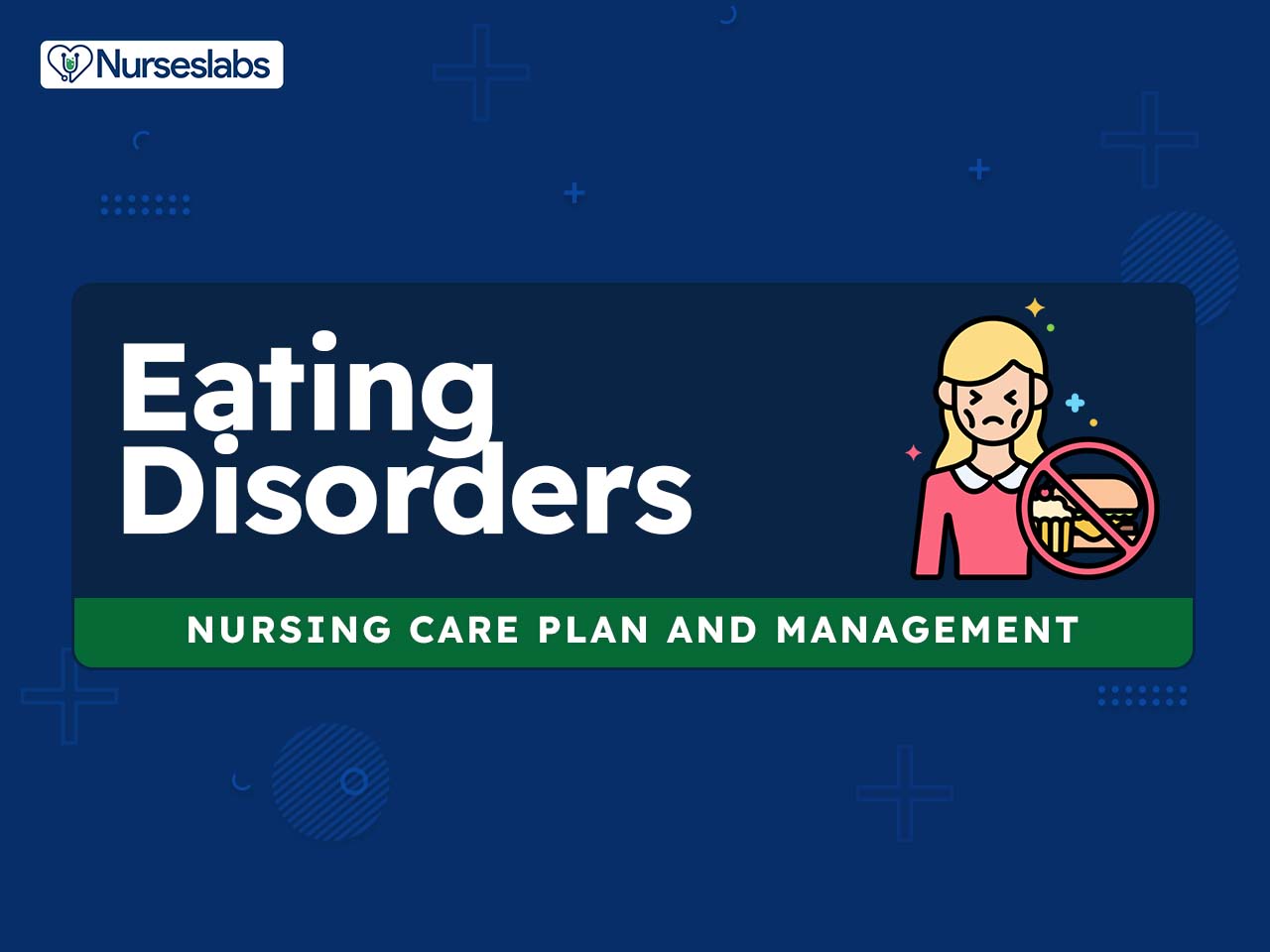
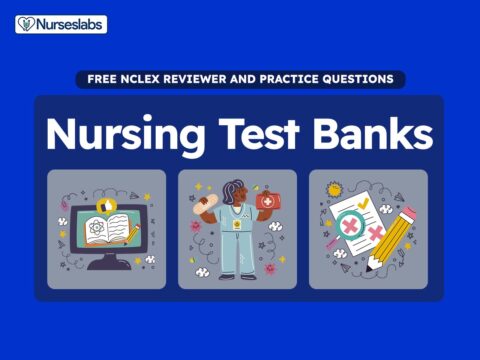
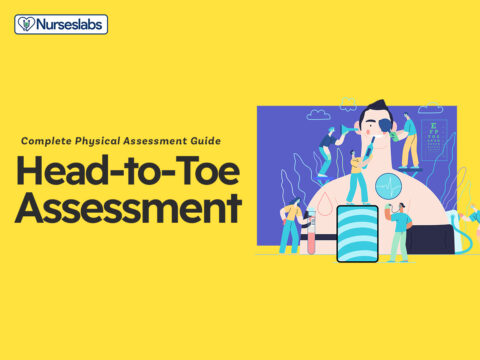





















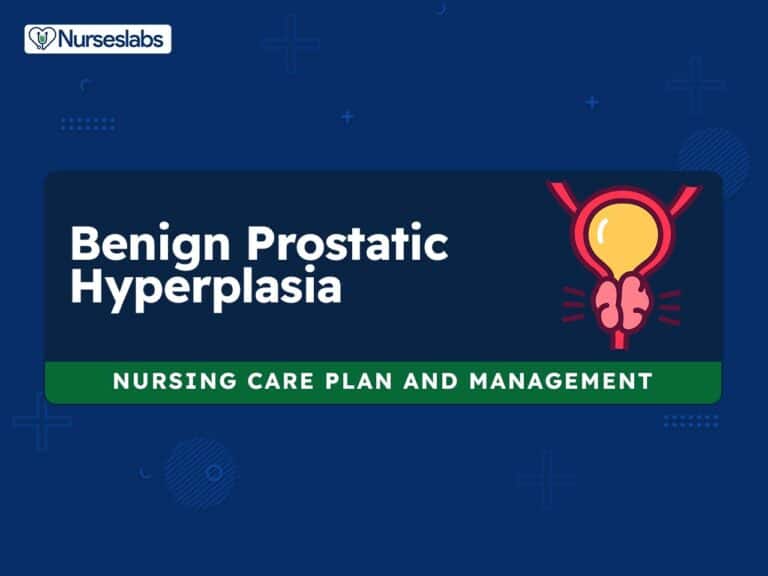
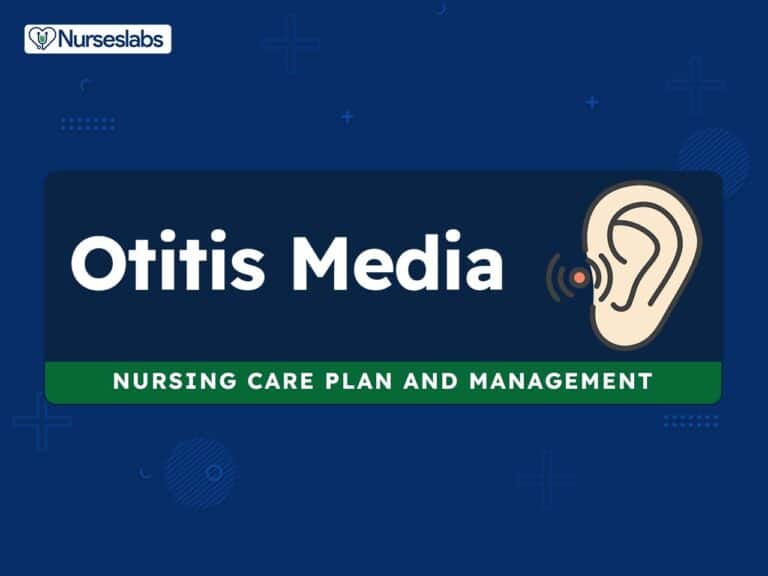
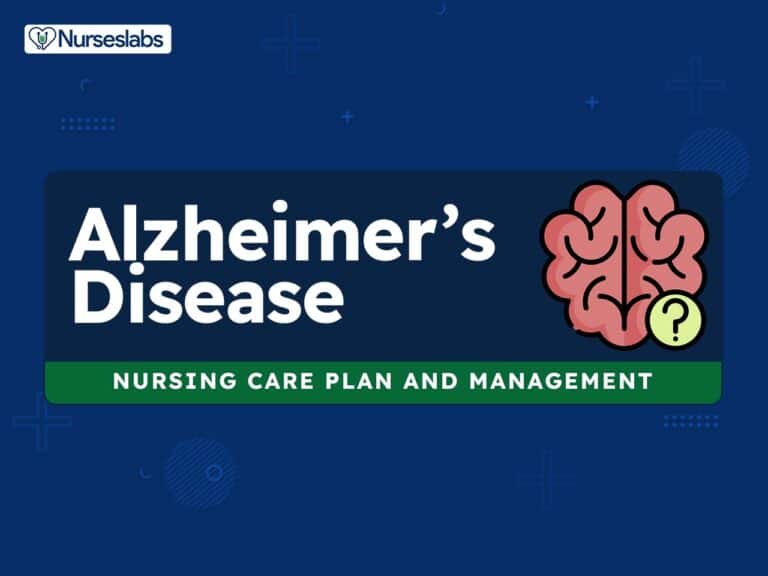
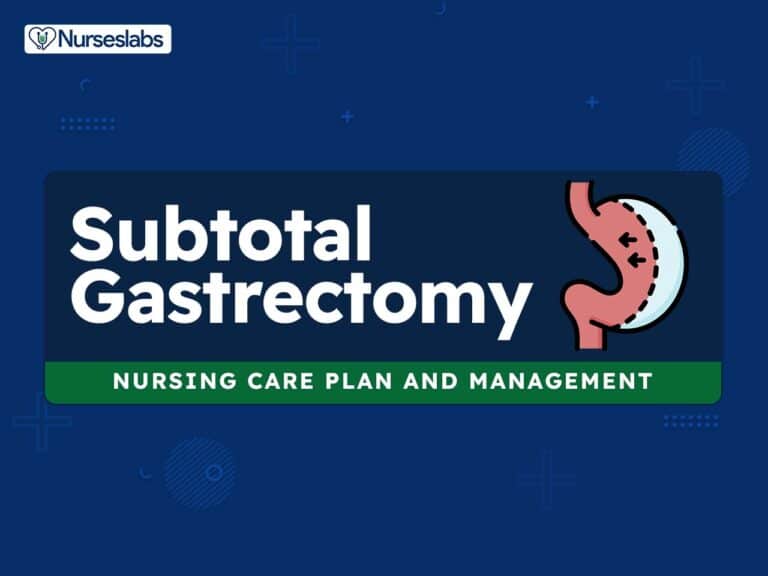
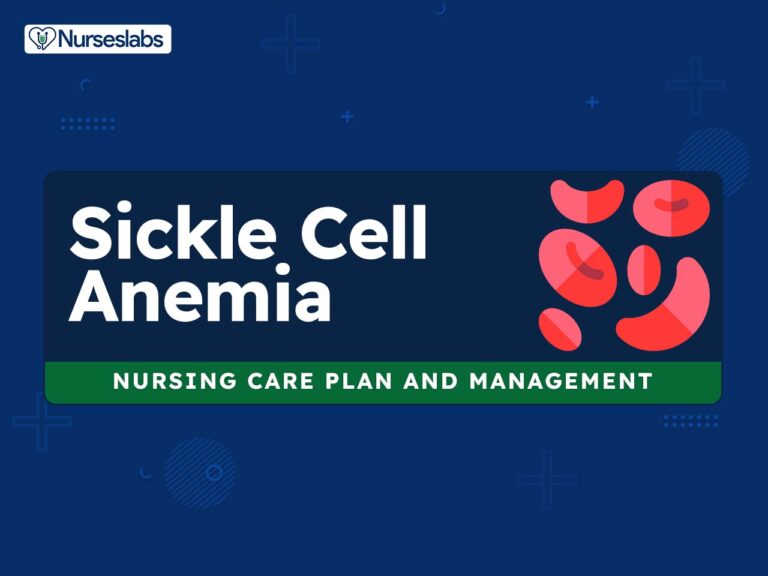
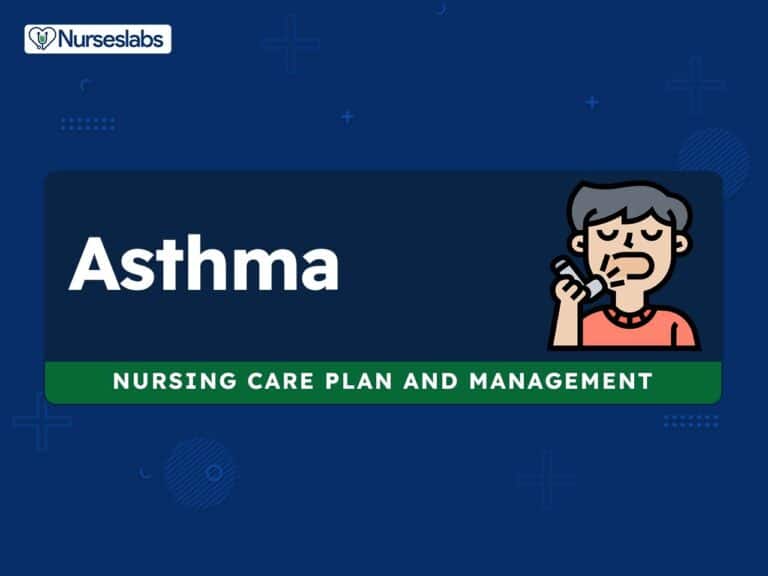
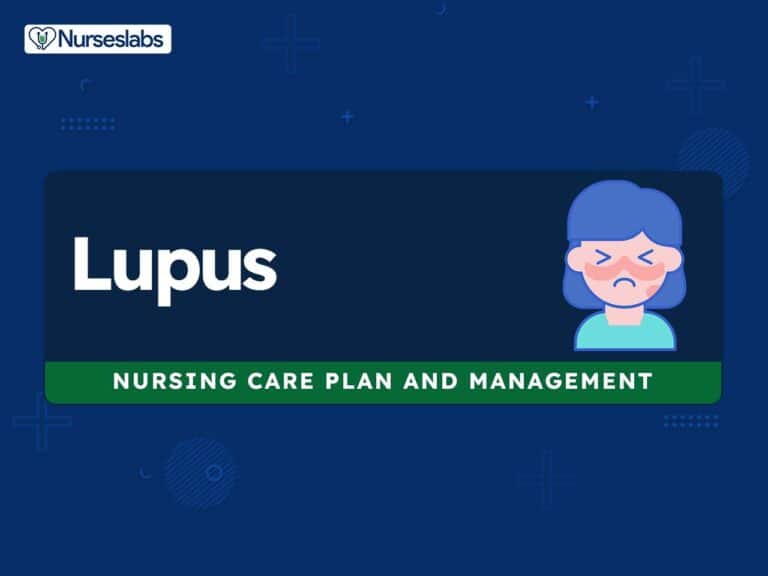

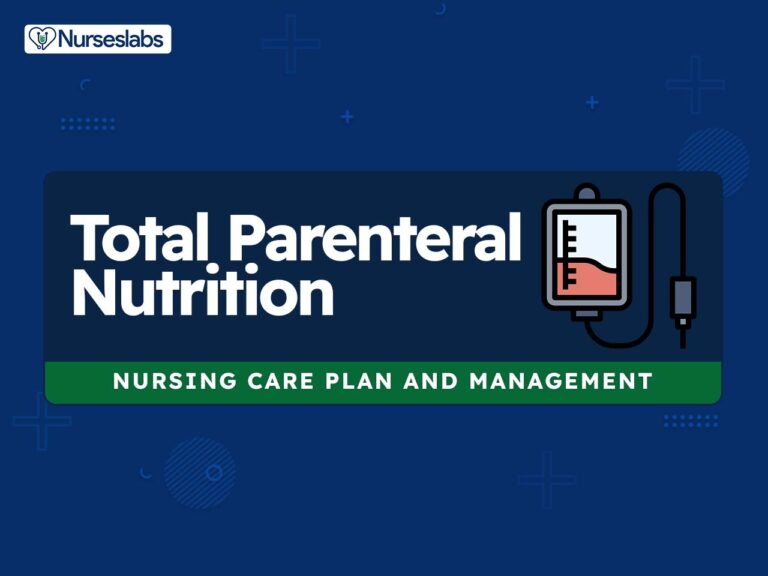
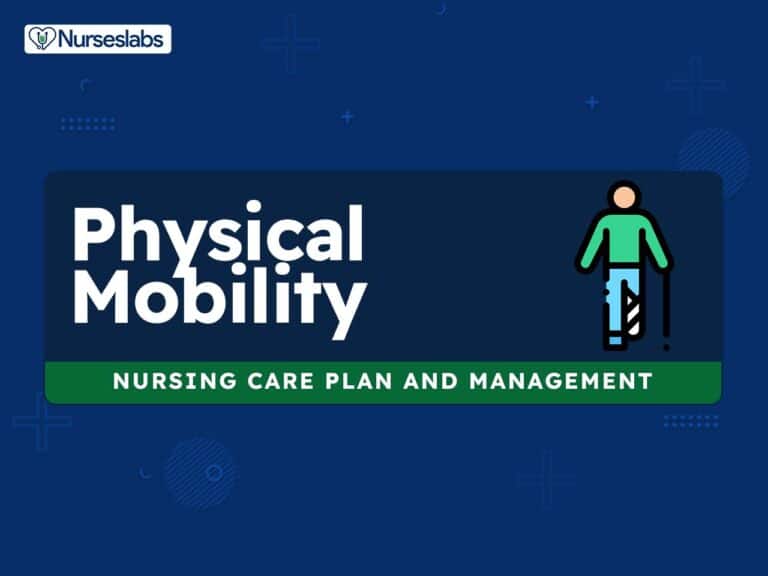
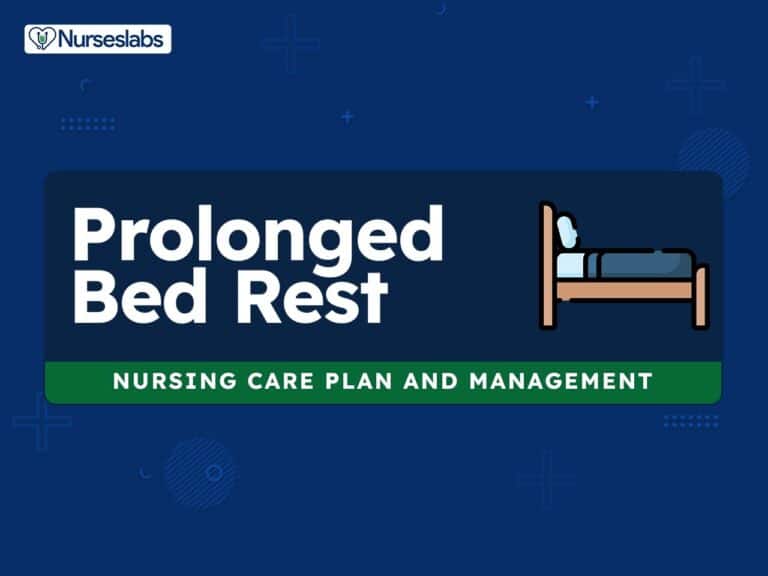
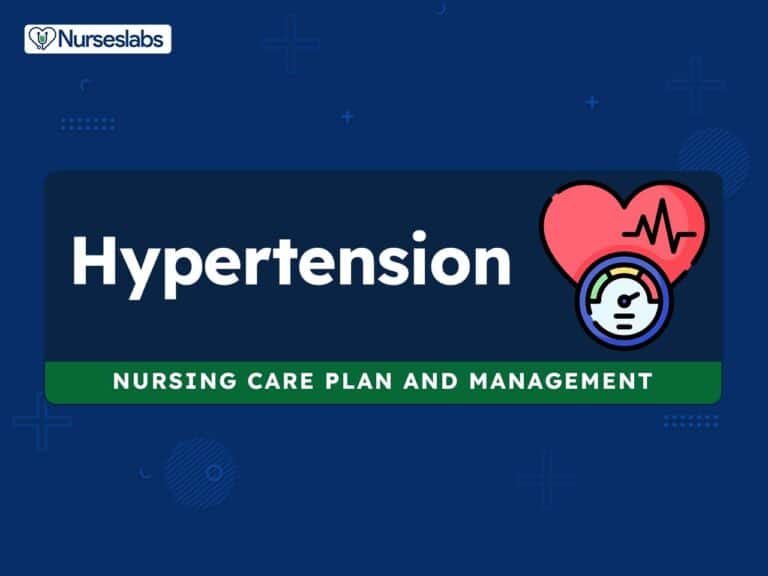
Leave a Comment